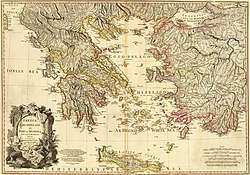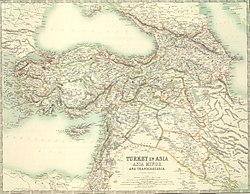Our website is made possible by displaying online advertisements to our visitors.
Please consider supporting us by disabling your ad blocker.
Byzantine Anatolia
This article may need to be rewritten to comply with Wikipedia's quality standards, as currently, the article is a very poor variant of History of the Byzantine Empire. It should focus on Anatolia, not the Empire as a whole except where developments impacted on the peninsula itself. (January 2013) |
| History of Greece |
|---|
 |
|
|
| History of Turkey |
|---|
 |
| Timeline |
|
|
Byzantine Anatolia refers to the peninsula of Anatolia (located in present-day Turkey) during the rule of the Byzantine Empire. Anatolia was of vital importance to the empire following the Muslim invasion of Syria and Egypt during the reign of the Byzantine Emperor Heraclius in the years 634–645 AD. Over the next two hundred and fifty years, the region suffered constant raids by Arab Muslim forces raiding mainly from the cities of Antioch, Tarsus, and Aleppo near the Anatolian borders. However, the Byzantine Empire maintained control over the Anatolian peninsula until the High Middle Ages (years 1080s), when imperial authority in the area began to collapse.
The Byzantine Empire re-established control over parts of Anatolia during the First Crusade, and following the sack of Constantinople during the Fourth Crusade, Anatolia became the heartland of the successor states of the Empire of Nicaea and Empire of Trebizond. Following the retaking of Constantinople in 1261, the region gradually passed out of Byzantine control and into the hands of the Ottoman Turks as the empire gradually crumbled. The last Byzantine fortress of Philadelphia fell in 1399, and the last Byzantine presence in the area at Trapezus ended in 1461 with the fall of Trebizond.
Previous Page Next Page


